Ulsan Petroglyph Museum (울산암각화박물관)
12.4 Km 34628 2021-02-22
254, Bangudaean-gil, Ulju-gun, Ulsan
+82-52-229-4797
Ulsan Petroglyph Museum was established on May 30, 2008 at the entrance to Petroglyphs of Bangudae Terrace (National Treasure No. 285) in Ulju-gun. The museum displays 311 exhibit materials and has an exhibition hall, a storage room, a research lab, and an audiovisual room.
The exhibition hall presents models of petroglyphs of Bangudae and petroglyphs of Cheonjeon-ri (National Treasure No. 147), an educational video introducing the petroglyphs, a children’s hall, and family activity facilities. Visitors can observe reproductions of famous petroglyphs at the outdoor exhibit.
Jaeyaksan Mountain (재약산)
12.8 Km 16590 2021-05-25
Gucheon-ri, Miryang-si, Gyeongsangnam-do
+82-55-352-1150
Situated between Miryang and Ulju, Jaeyaksan Mountain (1,119.1 meters) boasts gorgeous landscapes with giant rock formations near its peak. One of the most popular attractions of the mountain is Sajapyeong Plain and its vast field of silvergrass. The hiking course is relatively easy, adding to its charm. Nearby attractions include Eoreumgol Valley, Hobakso Pool, Pyochungsa Temple, Cheungcheungpokpo Falls, and Geumgangpokpo Falls.
Petroglyphs of Cheonjeon-ri, Ulju (울주 천전리 각석)
12.9 Km 30009 2020-02-05
Cheonjeon-ri, Dudong-myeon, Ulju-gun, Ulsan
+82-52-277-0101
Petroglyphs refer to the paintings in which objects and symbols are carved, pecked, and colored on rocks, huge cliffs and cave walls.
Some of these rocky paintings are from as early as the late Paleolithic Era, but mostly they are seen from the New Stone Age, Neolithic Era and Bronze Age in which times these paintings were abundant.
The upper part of the rock shows various animals including deer pecked into the rock, and the lower part of the rock has writing and drawings of humans, and animals made by penciling.
As for the upper part, it is thought to have been made throughout the New Stone Age and Bronze Age to express their consciousness for abundance. In comparision, the painting of a cavalcade, a sailing boat, a dragon, a horse, and a deer and about 300 writings on the lower part of the rock were considered to be done by people during unified Silla, showing their belief of the area as a holy ground.
Petroglyphs of Bangudae Terrace (울주 대곡리 반구대 암각화)
13.0 Km 26550 2023-07-17
285, Bangudaean-gil, Ulju-gun, Ulsan
+82-52-204-0322
In Daegok-ri, Eonyang-eup sits Bangudae Terrace, a picturesque spot where a ridge of Yeongosan Mountain extends to and stands tall to form quite a spectacle featuring uniquely shaped rocks and cliffs. The name, Bangudae, comes from how it resembles a turtle lying prone on the ground. Petroglyphs are paintings drawn by people from the prehistoric times carved on rocks and depicting various scenes and events in their daily lives. Petroglyphs were often drawn on enormous rocks and other sacred locations of groups, and it is believed that people gathered around them to hold various rituals.
Petroglyphs of Bangudae Terrace in Daegok-ri, Ulju-gun are estimated to have been drawn over several periods since the New Stone Age so you can discover the differences in styles among various ages. Primary objects that were popularly carved include sea animals, land animals, humans and tools and, as our prehistoric ancestors actively engaged in hunting, the hope of abundance in game is believed to be the reason why these objects were frequently carved on rocks. Vividly expressing animals and hunting scenes and colorfully depicting outstanding traits of objects, these petroglyphs are a form of both hunting art and religious art, and they are considered as the greatest masterpieces from which we can take a peek at the life and customs of the prehistoric ages.
Tongdo Fantasia (통도환타지아)
14.3 Km 28424 2022-09-26
68, Tongdo 7-gil, Yangsan-si, Gyeongsangnam-do
+82-55-379-7000
Tongdo Fantasia is located in Yangsan, Gyeongsangnam-do, which shares borders with Milyang, Ulsan and Busan. This makes the amusement park very accessible by any means of transportation. Tongdo Fantasia operates Tongdo Country Club as well, and nearby Tongdosa Temple is also available for visitors who want to look around the local historic sites. The amusement park, the biggest theme park in Gyeongsangnam-do sits at the foot of Yeongchwisan Mountain, has over 30 amusement facilities, a large-scale swimming pool, a natural lake, a plaza for various events and a large-scale outdoor theatre, all offering various activities and events.
Gyeonggi Sikdang (경기식당)
14.8 Km 23502 2024-02-23
86 Sinpyeonggangbyeon-ro, Habuk-myeon, Yangsan-si, Gyeongsangnam-do
Gyeonggi Sikdang is nestled near the Tongdosa Temple, one of Korea's three major temples. It is celebrated for its expertise in Korean cuisine. The restaurant's signature dish is sanchae bibimbap (wild vegetable bibimbap), a vibrant mix of at least five types of namul (salad) harmoniously blended with their homemade gochujang (red chili paste). Each order is thoughtfully paired with an array of side dishes and a complementary soup. In addition to this signature dish, Gyeonggi Sikdang's menu boasts a diverse selection of Korean specialties, such as deodeok gui (grilled deodeok), dotorimuk (acorn jelly salad), pajeon (green onion pancake), and baeksuk (whole chicken soup).
Vanastha (Healing in Ulju) (와나스타(울주에서 치유하다))
15.0 Km 0 2024-01-10
207 Daeam 1-gil, Eonyang-eup, Ulju-gun, Ulsan
Vanastha, located in the forest inside Daeam Dam in Ulju-gun, is a forest yoga house that means "stay in the forest." For modern people who lack time to look back on their bodies in their tired daily lives, it provides time to fully focus on themselves with proper breathing, meditation, and Hatha yoga. Here, one can hear the sounds of nature, feel nature, and experience of becoming one with nature and the universe, only in nature. It offers a one-day class and a yoga meditation program on Saturday mornings. Private session option is available for a group of four or more people with a reservation in advance.
Tongdosa Temple [UNESCO World Heritage] (통도사[유네스코세계문화유산])
15.0 Km 59196 2024-02-08
108 Tongdosa-ro, Habuk-myeon, Yangsan-si, Gyeongsangnam-do
Tongdosa Temple, esteemed for its establishment in 643, is a revered site recognized as a UNESCO World Heritage. This temple proudly houses Buddha's genuine sacred relics. It also boasts an array of significant Buddhist cultural treasures, such as the Daeungjeon Hall, the Gilt-Bronze Vairocana Buddha, and the Buddhist Museum. Additionally, the temple offers a templestay program for visitors.
The Oriental Medicine Resort: Chorakdang (한방테마파크 초락당)
17.8 Km 17091 2021-02-10
44-34, Gyemyeong-ro, Ulju-gun, Ulsan
+82-52-264-8001
Opened in 2001, Chorakdang is a health resort that specializes in Oriental medicine treatments. The resort offers the perfect setting for rest, relaxation, and medical treatments. The traditional hanok buildings and natural surroundings intensify the health benefits of the resort.
Chisanseowon Confucian Academy (치산서원)
18.0 Km 25004 2020-02-05
7, Chisullyeong-gil, Dudong-myeon, Ulju-gun, Ulsan
+82-52-204-0324
Relics of Park Jesang is also referred to as Chisanseowon Confucian Academy.
Park Jesang, a descendent of Park Hyeokgeose, was severly tortured and then burned to death after rescuing two hostages taken by Japan, who were the brothers of King Nulji.
The nearby temple and Mangbuseok have a folk tale regarding the story. His wife and two daughters died waiting for him and then his wife is said to have turned into Mangbuseok (faithful wife stone) in the eastern Chisullyeong Mountain in Manhwa-ri, Dudong-myeon. According to the legend, her spirit became a bird, and flew away to hide behind Euneulam (Bird Hidden Rock).
After Park Jesang's couragous act, King Nulji gave him a loyal officers position as well as the role of godmother to his wife for her model behavior of wifely duty. Chisanseowon Confucian Academy keeps their ancestral tablets to honor royalty.
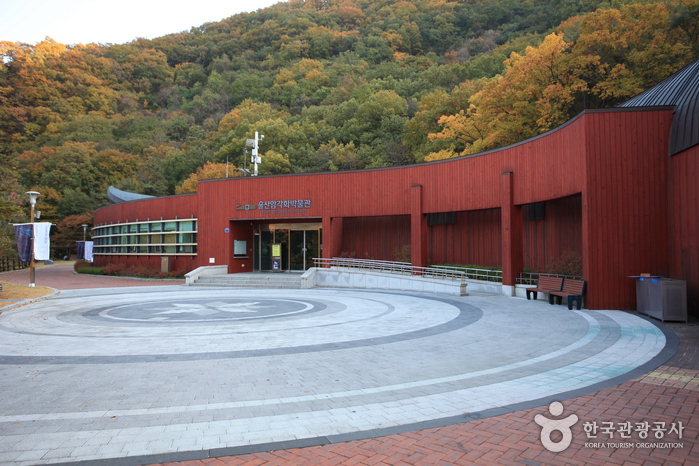
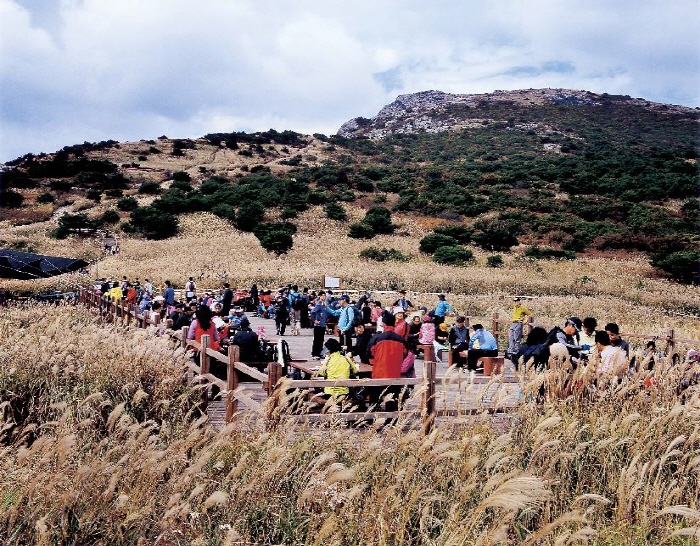
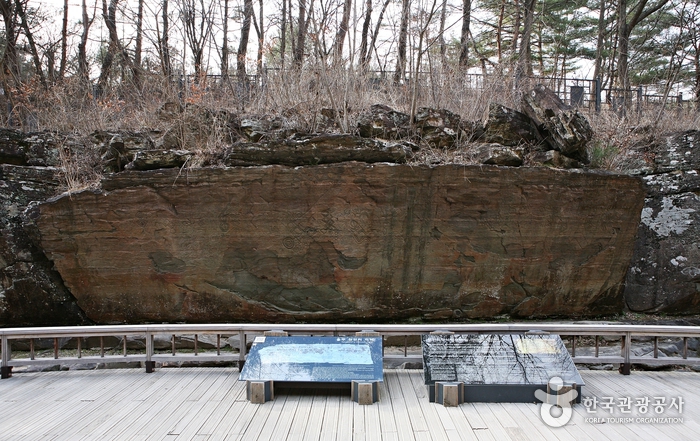

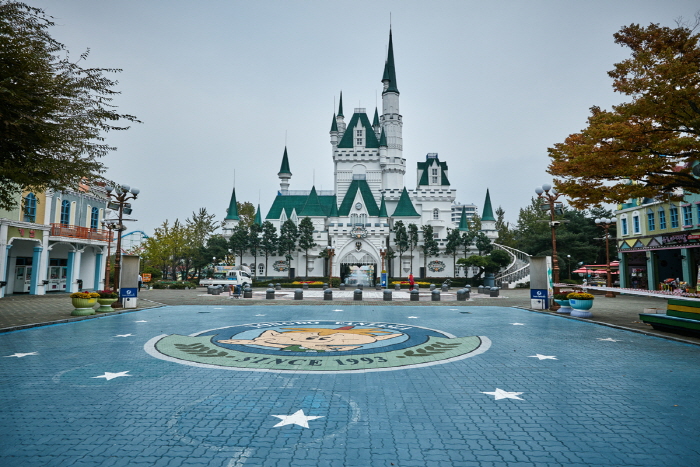
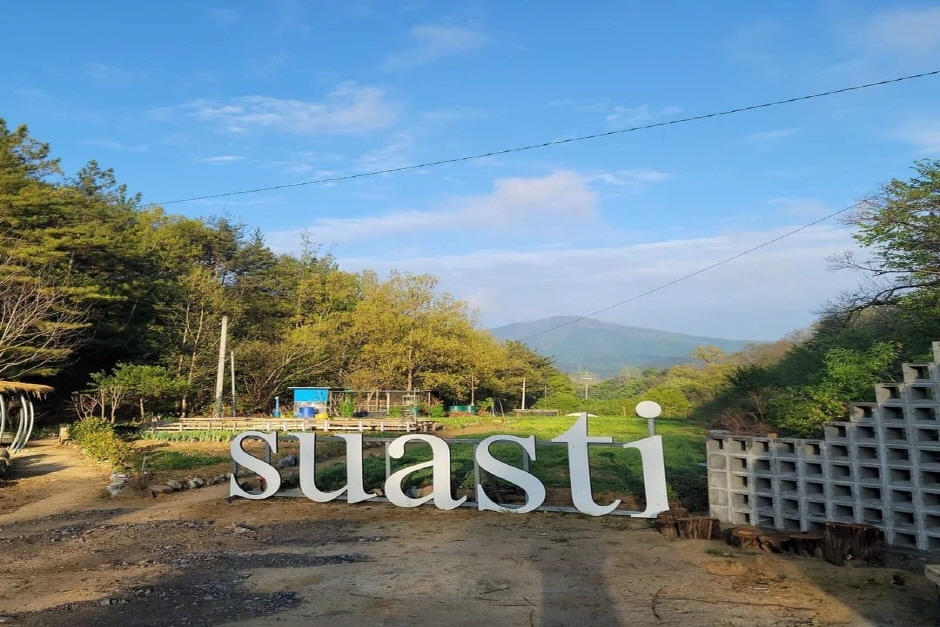
![Tongdosa Temple [UNESCO World Heritage] (통도사[유네스코세계문화유산])](http://tong.visitkorea.or.kr/cms/resource/83/1229083_image2_1.jpg)
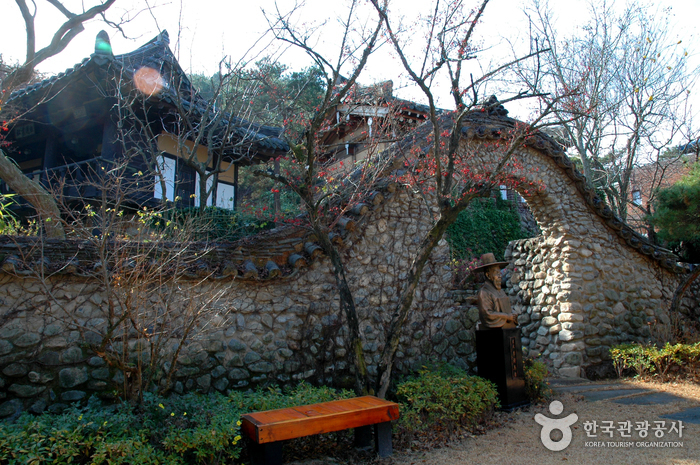
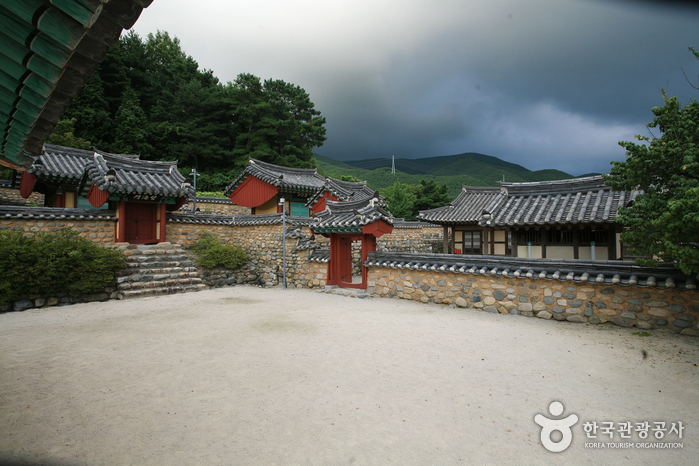
 English
English
 한국어
한국어 日本語
日本語 中文(简体)
中文(简体) Deutsch
Deutsch Français
Français Español
Español Русский
Русский